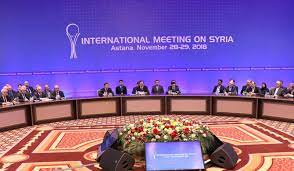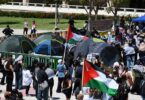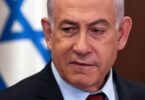Sinem Cengiz
As the veteran Turkish ambassador Ertugrul Apakan once noted: “Success might sometimes only be achieved after many failed attempts … there is no single recipe for successful mediation, just as no conflict is the same as another.”
The Astana peace process for Syria was initiated in January 2017 when the Geneva talks had been stalled for a year, having shown that they were not likely to achieve success. The main difference in the Astana peace process is that it is being led by Russia, in contrast to the Geneva talks which were led by the US and Western countries. It is implemented by key players — Turkiye, Russia, and Iran, who are all involved militarily in Syria.
Astana was chosen as the venue because Kazakhstan had no stake in the Syrian conflict and was considered neutral by all parties. The initiative’s timing, participant list, location, guarantors, and geopolitical context pointed to an important shift in the international effort to end the conflict.
The Astana peace process began as a less ambitious effort, focused only on ceasing hostilities and on the functioning of de-escalation zones, rather than on developing an immediate political solution. Thus, it adopted a shift in the Syrian peace process from Bashar Assad’s removal to humanitarian issues and the cessation of violence. The Astana process aimed to bring the conflicting sides to the table to negotiate, and changed the power equations on the ground in Syria. Turkiye’s role was to guarantee the participation of the opposition; Russia guaranteed the regime’s participation; and Iran was included to avert its disruption.
The 20th round of the Astana peace talks began on Wednesday. The sides agreed to reconvene for the next round in the second half of the year, but Kazakhstan surprisingly proposed ending the process, showing its reluctance to host the next meetings. Kazakh officials cited Syria’s recent return to the Arab League and efforts to restore ties with Turkiye as proof that the Astana talks had achieved their purpose. Kazakh Deputy Foreign Minister Kanat Tumysh said: “Syria’s gradual emergence from isolation in the region could be regarded as a sign that the Astana process has completed its task. Considering Syria’s return into the Arab family, we propose officially declaring the 20th meeting under the Astana process as the final one.”
Kazakhstan’s decision was an unexpected one as the former Soviet republic has provided a venue for talks to representatives of Russia, Turkiye, Syria and Iran since 2017. The Russian envoy to Syria, Alexander Lavrentyev, who led Moscow’s delegation at the talks, said Kazakhstan’s decision was a complete surprise. Lavrentyev said that no decision was made about a new venue for future talks later this year, but suggested they could be held in Moscow, Ankara, Tehran, or even Damascus.
Did the Astana peace process accomplish its mission? When considering this, first and foremost to be considered is that it managed to achieve modest but meaningful success in the formation of the de-escalation zones inside Syria, a lessening of the conflict in a way that serves the national interests of all three countries, and brought all the parties in the conflict to the negotiating table —all of this despite many conflicting ambitions being at stake. The three guarantors support the territorial integrity of Syria. The partition of Syria was of no benefit to any of them, and each of these three countries may be faced with significant losses in such a scenario.
Secondly, the guarantor states also found themselves on the same page on the issue of fighting extremism.They shared a common concern that jihadist extremists finding fertile ground in Syria may harm their interests. At Wednesday’s meeting, the most prominent topic was counterterrorism efforts in Syria, where terrorist groups rose to prominence amid the conflict.
Beyond its modest success, what did the Astana peace process mean to those involved? From the regime’s point of view, the process was a chance to regain lost credibility in the international community’s eyes and to remain relevant. After a decade-long isolation, the Syrian regime returned to the Arab fold last month with Assad attending the Arab League summit in Jeddah.
From the guarantors’ point of view, the Astana peace process meant more leverage, and the strengthening of their hand at the table and on the ground. Despite their having opposing visions of the war in Syria, the process eventually built closer ties among them. The process even started after tension in Turkiye’s relations with both Russia and Iran in 2015-16. Since then, Turkiye carried out several military operations in northern Syria while the Astana process was on track. Those operations would not have been possible without Russia’s explicit approval, as it controls Syrian airspace.
With the change of venue and the inclusion of Syria on the track, the Astana format has been going through a change. While the Astana peace process paved the way for direct talks with the Syrian regime, the new format is likely to formalize the normalization path between Ankara and Damascus along with the push of Syria’s two allies, Moscow and Tehran. However, the next stage seems to be a tougher one as Ankara and Damascus differ in their approach to opposition forces, to the Turkish presence in northern Syria, and refugees. Astana’s initial task may have been accomplished, but the main one is yet to be achieved.







